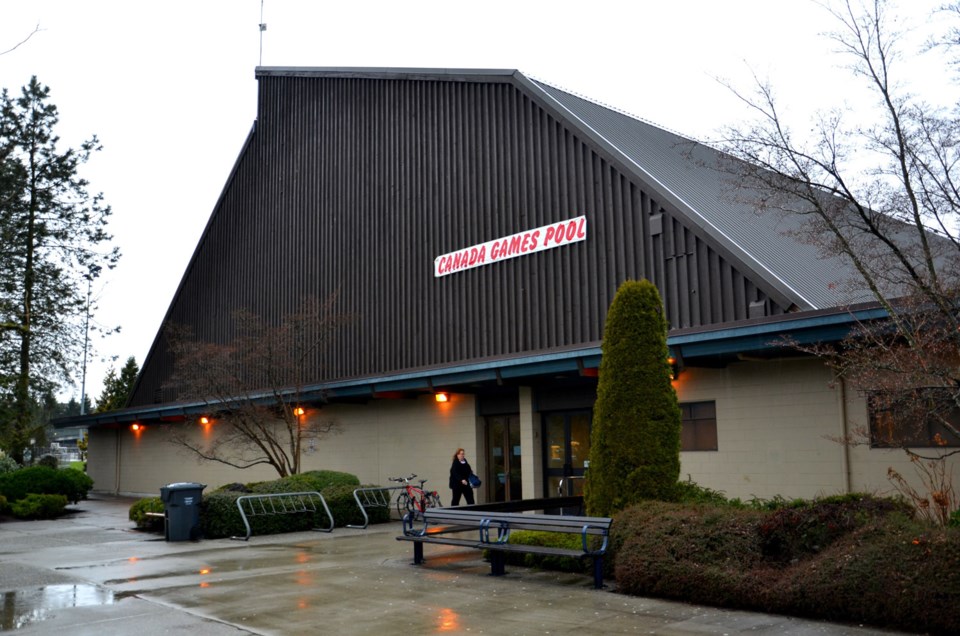A new aquatic centre, automated electrical metering equipment and roads and parks initiatives are among more than 500 line items in the City of New Westminster’s proposed 2021 capital budget.
The proposed $202.6-million budget includes some new initiatives, as well as some projects that didn’t done in 2020 because of COVID-19.
Harji Varn, the city’s director of finance, said the city had set out to spend $137 million on items in its 2020 capital budget, but then the pandemic hit and the city had to defer a quite bit of spending.
“That means we are carrying over a lot of our work into 2021,” she said.
In addition to carrying over$85 million from 2020 for initiatives like the aquatics centre, land purchases, Massey Theatre, roads and paving, and a pump station, the proposed 2021 capital budget includes $117.6 million in “new asks” including money for initiatives such as cycling and greenways, Moody Park Arena and a fire boat.
At a Nov. 16 workshop with council, staff outlined the proposed 2021 capital budget – including some items deemed to be “preliminary in nature” so council has a complete picture of what’s being proposed for next year’s budget.
“Today is not about making decisions. It is a proposed budget,” Varn stressed. “It is the list of priorities.”
A staff report states that an “ambitious” program is proposed, which aims to pursue many of the projects and initiatives directed by city council and supported by community members during a public engagement process.
Varn said the budget is based on the guiding principles of being sustainable, adaptable, stable and accountable, so the city can continue to focus on council’s strategic priorities, climate action and core services, while managing through the pandemic and uncertain times.
“The existing 2020 to 2024 capital program of $475 million is ambitious and relies heavily on debt and the existing reserves, as discussed during previous budget meetings over the years,” she said. “During 2020, COVID impacts required the city to reduce spending and defer several capital projects. You will see in the 2021 proposed capital budget it is a combination of deferred 2020 capital projects, due to COVID, and important city projectsalready earmarked for 2021.”
According to Varn, the city is currently in “excellent” financial health.
“Aswe move into the 2021 proposed capital budget, we do seek to add another $85 million in new debt and draw $100 million on our reserves. Some projects, the big one being our New Westminster aquatic centre, and other projects that make up the $202.6 million of the proposed capital project are all important projects serving the community,” she said. “So therefore, a firm commitment to financial best practice, such as delivering these capital projects on time and on budget and not dipping into contingencies, will all help the city’s cash position.”
Varn said that securing federal and provincial funding would “greatly assist” the city’s financial sustainability, and would reduce the city’s reliance on debt and help replenish reserves.
“The 2021 proposed capital budget, while supportable from a financial management perspective, places strain on the city,” Varn said. “An overreliance on debt does strain the city’s ability to be nimble and flexible and pivot toward new opportunities when they arise.”
Big-ticket items in the proposed 2021 capital budget include the New Westminster Aquatic Centre (Canada Games Pool and Centennial Community Centre replacement) – $84 million; Queensborough substation/electric grid – $19 million; automated electrical meters – $10 million; vehicles and equipment – $8 million; cycling/greenways – $7 million; sewer separation – $6 million; Massey Theatre – $6 million; the Boundary pump station – $6 million; facilities – $4 million; land purchases –$5.7 million; water main replacements – $5 million; and paving and roads – $4 million.
According to staff,$99.6 million of the capital budget would be funded through reserves and $85 million would come from approved debt funding. A further $14 million would come from partners, federal and provincial governments or third-party funding, while $4 million would come from development cost charges.
Lisa Spitale, the city’s chief administrative officer, said the city is seeking to incorporate a best-practiceapproach of finishing the budget process by the end of year. To do that, council will follow up on the Nov. 16 workshop about the purposed capital budget and utility rates with a Nov. 23 workshop on the operating budget and a Dec. 7 workshop to consider the draft 2021 operating and capital budgets.
Mayor Jonathan Cote said he can’t recall a time in the last decade where the city has actually spent all of the funds approved in the capital budget, with 2020 being even more of an anomaly because of COVID-19.
“Where I’d really like staff to look at this capital plan is really actually take a realistic look and say, What can we get done this year?,” he said. “Even though it’s only on paper, putting forward a $200-million budget but then only delivering half of that, it seems like we haven’t actually really thought this through.”
Cote said the first step to getting the budget down to a “potentially a more manageable number” is for staff to have a good heart to heart and consider what can realistically get done in 2021.
“If the answer is ‘there’s a good chance we won’t get to this this year’ then it probably shouldn’t be in this year’s (plan); it doesn’t mean it shouldn’t be in next year’s or it shouldn’t be in the five-year capital plan, but maybe it doesn’t make this year’s capital plan if that’s the case,” he said. “I know there might be a bit of an urge to kind of catch up on things that we fell behind on this year, but we might not have the capacity to do twice as much work that we would normally do in a normal year. I think a bit of a reality lens would be helpful.”



